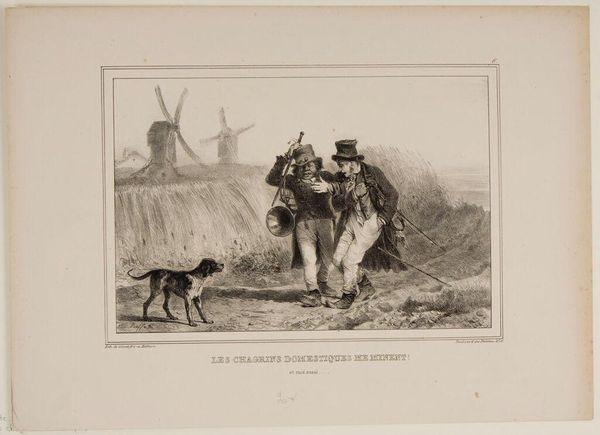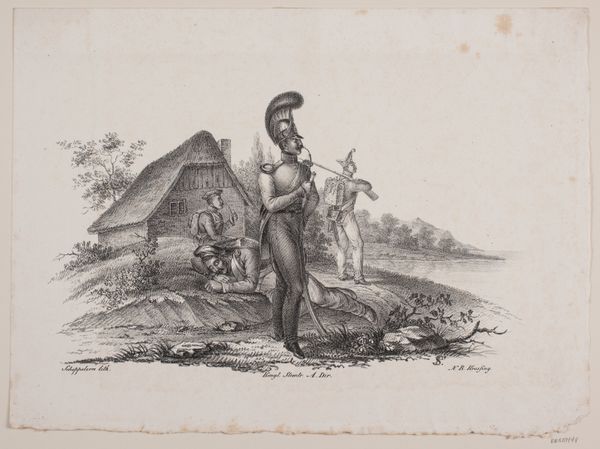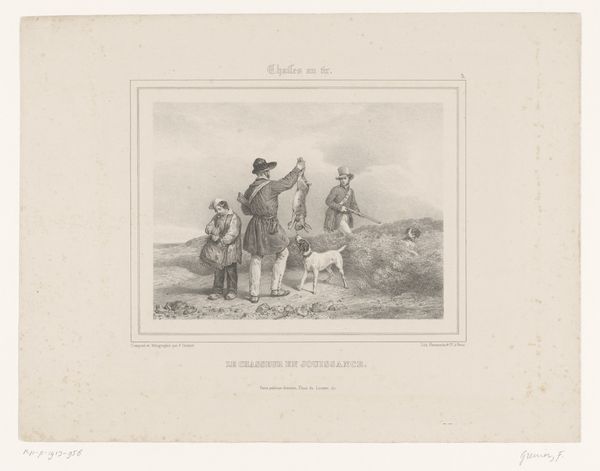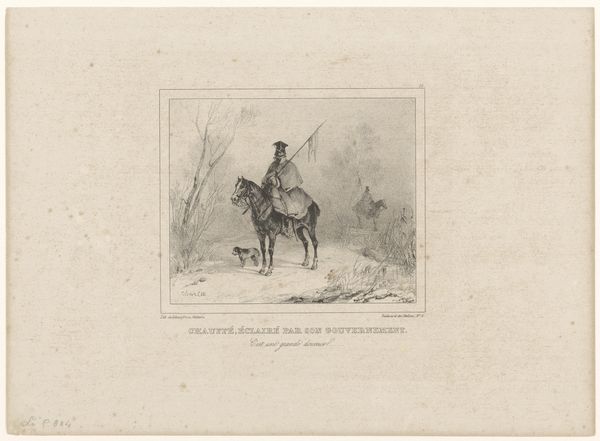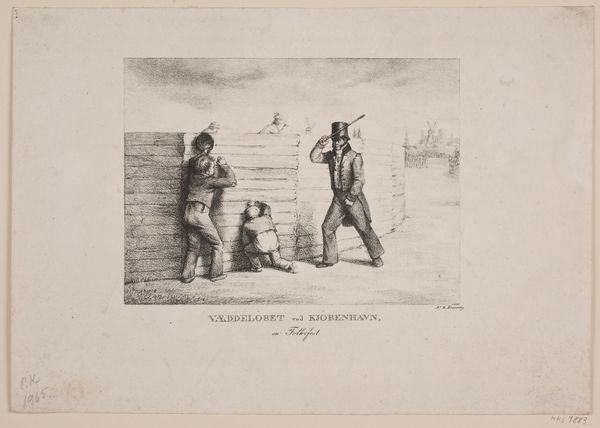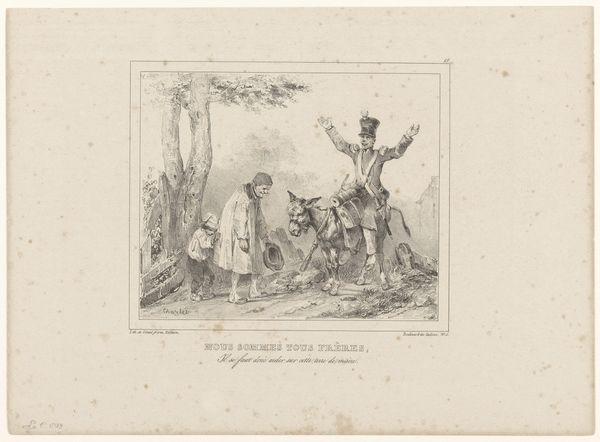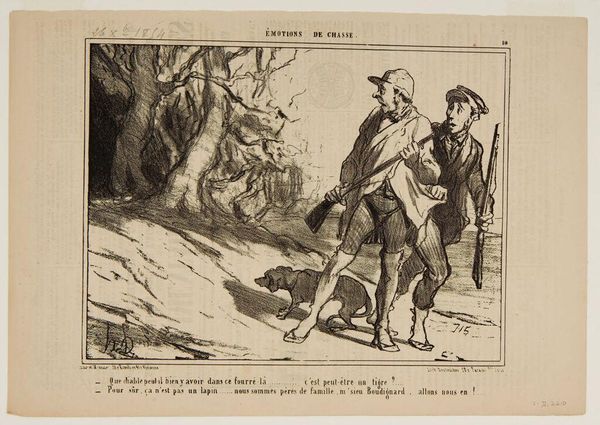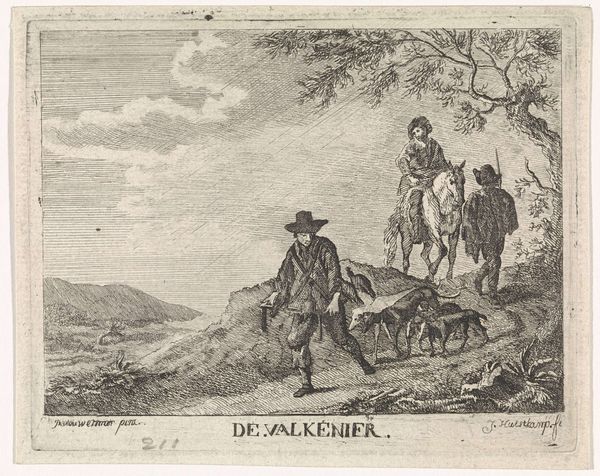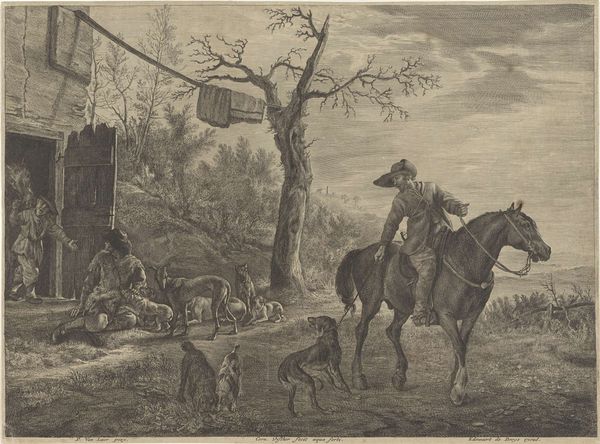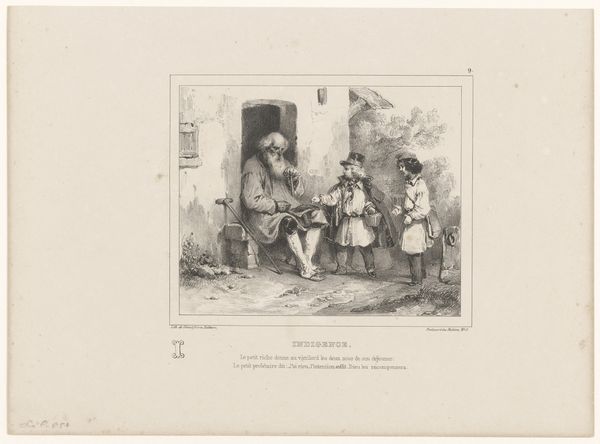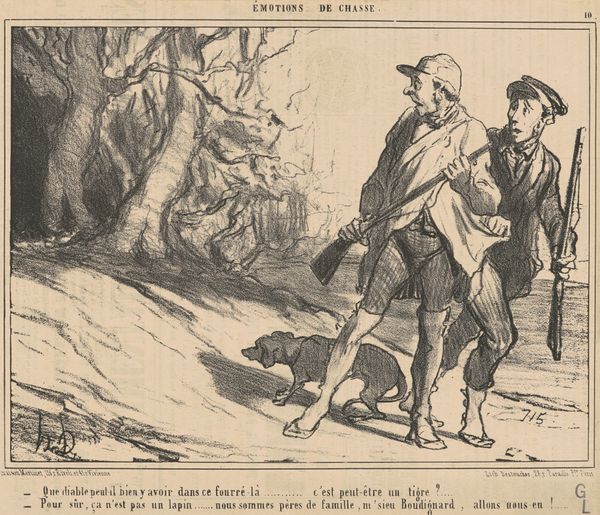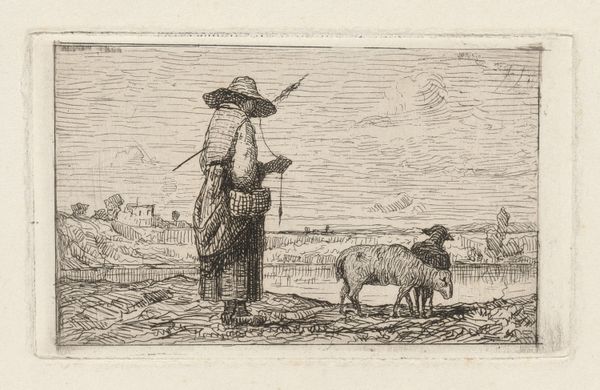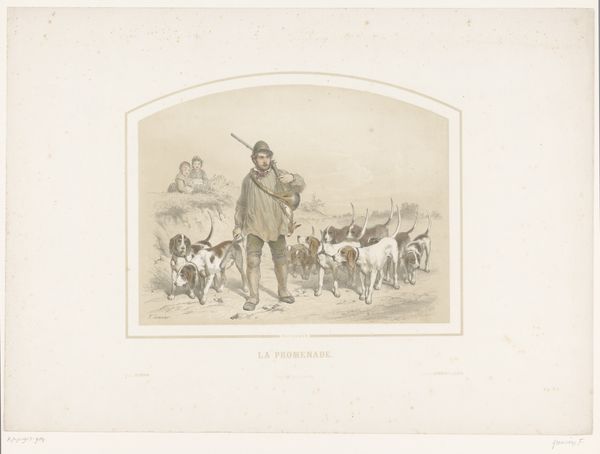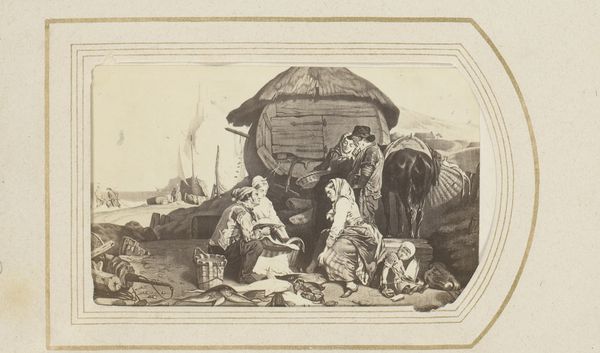
drawing, lithograph, print, paper
#
drawing
#
lithograph
# print
#
landscape
#
paper
#
romanticism
#
france
#
genre-painting
Dimensions: 170 × 252 mm (image); 217 × 270 mm (sheet)
Copyright: Public Domain
Curator: I find this lithograph by Auguste Raffet, titled "The Domestic Sorrows are my Torment!", deeply evocative. Made in 1836, it encapsulates a certain romantic sentiment. Editor: Evocative indeed. The stormy landscape mirrored in their troubled expressions makes it appear they're trying to escape their circumstances. There's a weight to it, a bleakness in the textures and tones that Raffet achieves with this print. Curator: This work and others by Raffet showcase the burgeoning print culture of 19th-century France, wherein social commentary could reach broader audiences through publications and accessible artworks. Editor: Yes, it feels like we are eavesdropping on a scene carefully crafted and consciously consumed in its time. I'm particularly intrigued by the landscape setting, those prominent windmills for instance, and the materials used in the process, allowing such replication for the masses. Do you consider this reproducibility enhanced or detracted from its status as "art"? Curator: The creation and distribution process here really highlights a tension within Romanticism. Note the very rough and ready rendering of the dog in the bottom left corner for example, where the quality of detail is decidedly less laboured. This could easily have been due to factory piece-work style production that ensured wide reach, while compromising on precision. This artwork, made of paper, through the technique of lithography, could perhaps reflect anxieties concerning industrialized modes of cultural production. Editor: It underscores how these images functioned in public life and popular culture, a critical function in a pre-mass media era. Consider the title – "The Domestic Sorrows are my Torment!" – a sentiment so potent it invites repeated circulation and, arguably, helps form a sense of shared public feeling. The artist positions the work very purposefully at the intersection of private feeling and public pronouncement, as something for individual owners but which gains power from being widely distributed and encountered. Curator: And, of course, we should mention the location of the work – in the Art Institute of Chicago – is critical in interpreting the object now. Placing it within a canon of master printmakers changes how we value its original social meaning. Editor: True. Observing it through this lens shifts its significance and reception for contemporary audiences, who engage with it very differently than Parisians in the 1830s might have. Curator: Looking at this print, I'm reminded how the method of creating art significantly affects both its accessibility and interpretation, extending far beyond the artist's initial concept. Editor: And how institutions like museums, in their turn, shape that continued unfolding of significance, inviting us to participate in an ongoing conversation between the art and its publics.
Comments
No comments
Be the first to comment and join the conversation on the ultimate creative platform.
